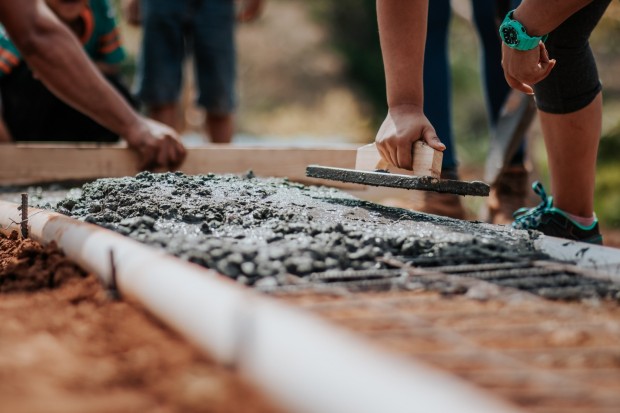Pouring concrete footings under the correct procedures is critical in the construction industry to establish sturdy structures. Listed below are some steps that need to be taken to correctly pour this concrete footing to reach its full potential.

(Photo : Pexels/Rodolfo Quirós )
How Do Concrete Footings Work?
Concrete footings comprise the foundational layer beneath a building. Rather than allowing a structure to sink into the ground, they disperse its weight across a larger area. When beginning a new building project, the first thing to be constructed is typically the footings. Footings must be built out of very robust concrete since they are required to hold considerable weight. As mentioned, a minimum pressure of 3500 pounds per square inch is needed.
Moreover, concrete footings can be broken down into several categories: wall footings, footings constructed under a single column, and footings constructed under numerous columns. Yet, concrete has a low tensile strength despite its high compressive strength, which means it can sustain huge loads without cracking, indicating that excessive weight can force it to lengthen. Therefore, horizontal and vertical rebars are frequently employed to reinforce the concrete mixture.
On the other hand, unusual circumstances are the ones that have the most potential to generate problems. The builder must make a judgment call when the footing is improperly positioned, causing the wall to lose its bearing, a soft zone is encountered on site, or insufficient footing. When you have reason to believe there may be an issue soon, you should immediately halt and contact an engineer. Nevertheless, if the danger is modest, you want to keep the job moving forward.
Also Read: Renovation Update on Historic Troy Tavern Building
Steps to Pour Concrete Footing
Materials:
-
Anchor bolt
-
Concrete
-
Posts
-
Power hole auger
-
Waxed fiber tube
-
Wooden stake
Procedure:
1. Utilizing the power hole auger, dig holes for the required footings to support your construction, which is essential to consider the weather conditions in your area while determining the depth of the holes. It is also necessary that the footing be at least 12 inches or 30.5 cm deeper below the frost line. Every winter, the water that is present in the soil freezes.
2. Create an aperture for a section of waxed fiber tube. The length of the piece ought to be sufficient to span a distance of two inches (five centimeters) above the ground and two inches or five centimeters deeper than the hole. Be sure the tube fits around the pole and is in the center of the hole.
3. Construct the waxed fiber conduit positioned in the center of the hole and pour concrete into both components. Using a wooden stake, stir the concrete occasionally to remove any air pockets that may have formed. Pour it slowly and intermittently.
4. Once you have completed pouring the concrete, Use the wooden stake to smooth the surface.
5. Ensure that your posts are inserted into the center of the waxed fiber tube before the concrete can dry. The post should hit the hole bottom and reach 2 inches (5 cm) below the pier or deck surface. In addition, each post should have an anchor bolt inserted into the center of it.
Related Article: Key Factors Shaping the Quality of Construction Projects From Complexity of Designs to Budget







